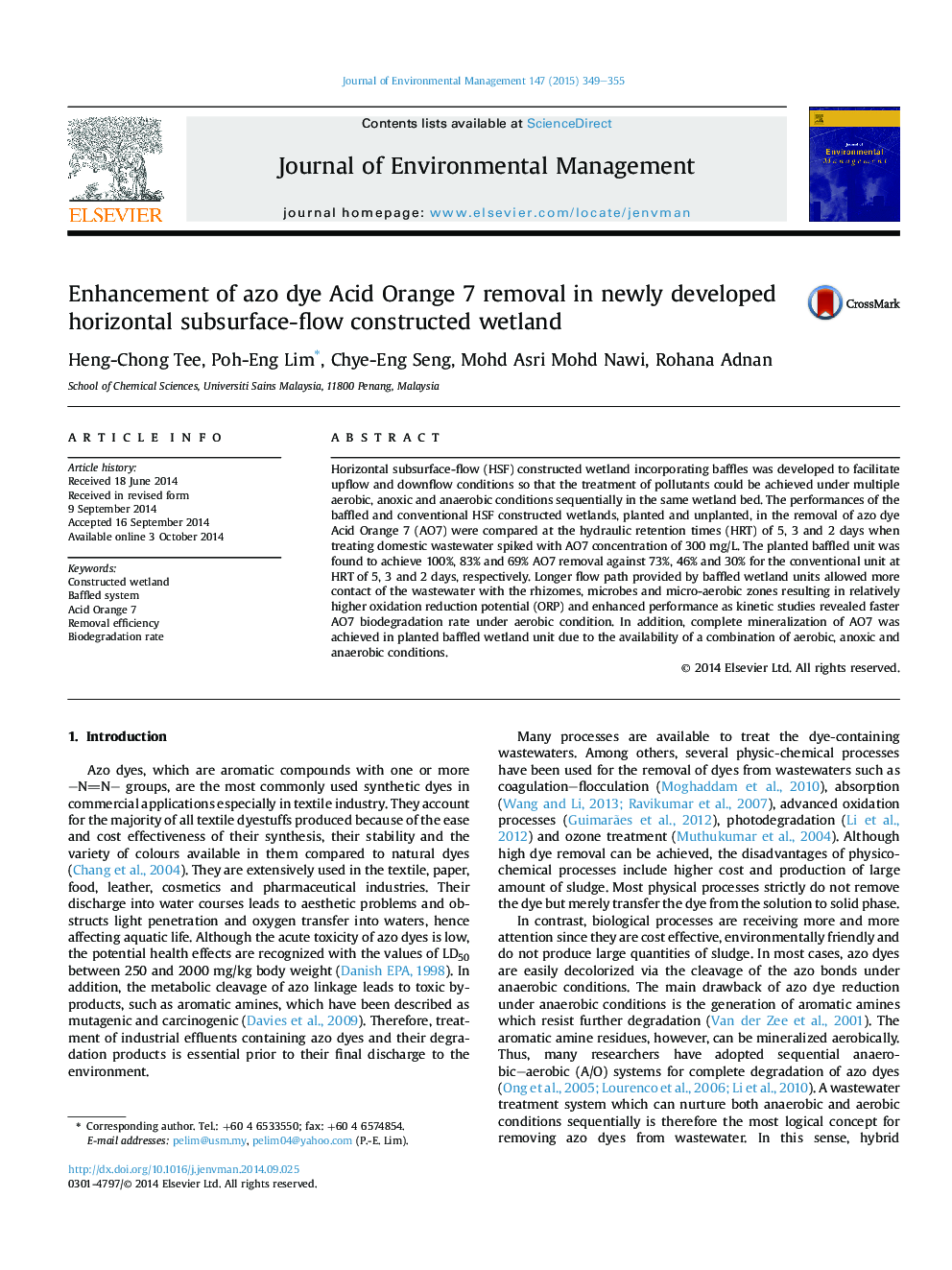| Article ID | Journal | Published Year | Pages | File Type |
|---|---|---|---|---|
| 1055678 | Journal of Environmental Management | 2015 | 7 Pages |
•Acid Orange 7 dye was treated in baffled subsurface-flow constructed wetlands.•Longer treatment path in baffled wetland enhanced AO7 removal efficiency.•Upflow–downflow design in planted baffled wetland created more aerobic zones.•Complete mineralization of AO7 was achieved in planted baffled constructed wetland.
Horizontal subsurface-flow (HSF) constructed wetland incorporating baffles was developed to facilitate upflow and downflow conditions so that the treatment of pollutants could be achieved under multiple aerobic, anoxic and anaerobic conditions sequentially in the same wetland bed. The performances of the baffled and conventional HSF constructed wetlands, planted and unplanted, in the removal of azo dye Acid Orange 7 (AO7) were compared at the hydraulic retention times (HRT) of 5, 3 and 2 days when treating domestic wastewater spiked with AO7 concentration of 300 mg/L. The planted baffled unit was found to achieve 100%, 83% and 69% AO7 removal against 73%, 46% and 30% for the conventional unit at HRT of 5, 3 and 2 days, respectively. Longer flow path provided by baffled wetland units allowed more contact of the wastewater with the rhizomes, microbes and micro-aerobic zones resulting in relatively higher oxidation reduction potential (ORP) and enhanced performance as kinetic studies revealed faster AO7 biodegradation rate under aerobic condition. In addition, complete mineralization of AO7 was achieved in planted baffled wetland unit due to the availability of a combination of aerobic, anoxic and anaerobic conditions.
